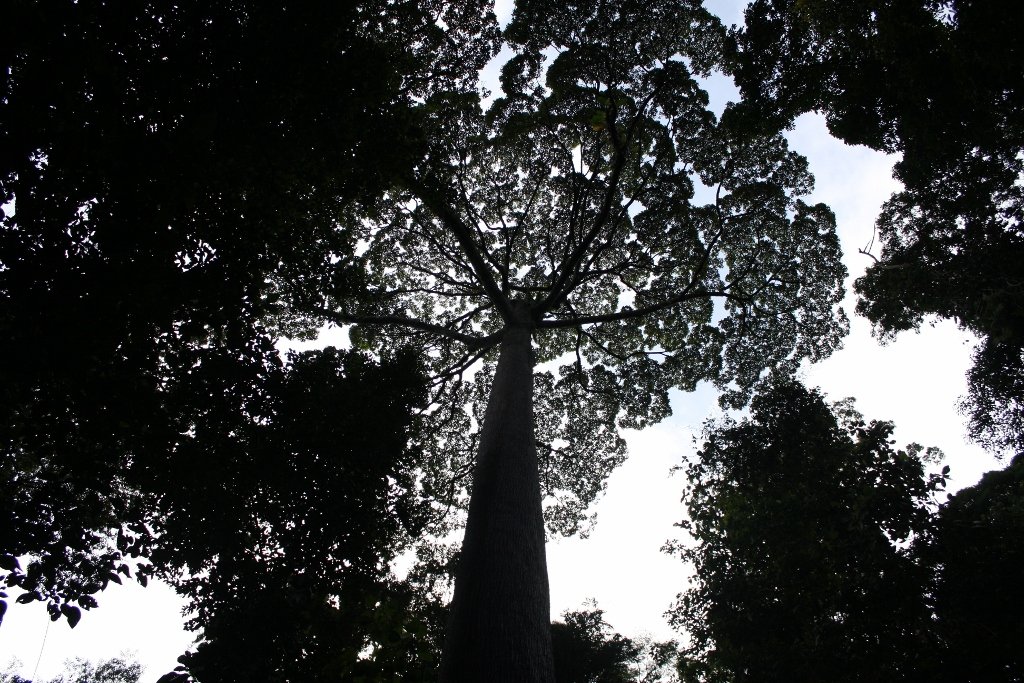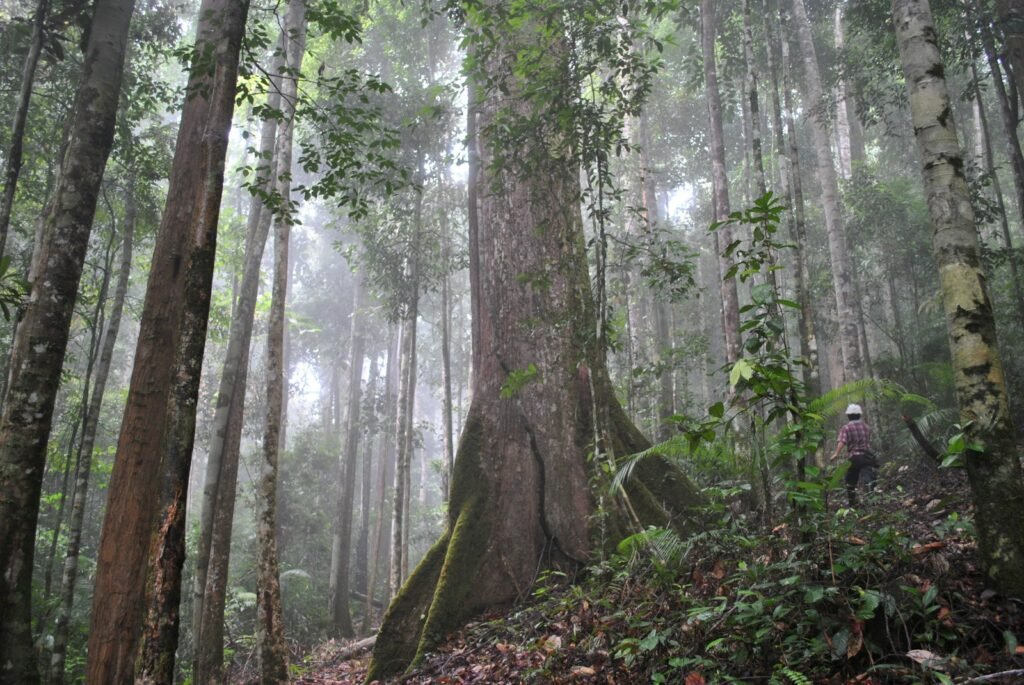Imagine standing in the heart of a Southeast Asian rainforest, the air thick with anticipation. Suddenly, over the course of a few short weeks, the forest explodes in a sea of blossoms—an event so rare and spectacular that scientists and nature lovers alike dream of witnessing it. This is the mysterious world of dipterocarp trees and their synchronized mass blooming, a phenomenon that has puzzled researchers for generations and inspired awe in anyone lucky enough to see it. What triggers these gentle giants to bloom in harmony, and how does this breathtaking spectacle shape the very soul of the rainforest? Let’s journey into the tangled green depths and unravel the secrets of these botanical titans.
The Mighty Dipterocarps: Kings of the Rainforest Canopy
Dipterocarp trees are the undisputed rulers of Southeast Asian rainforests, reaching heights of over 70 meters and forming the backbone of lush, ancient forests. These giants command respect not just for their size, but for their sheer abundance—sometimes making up more than half of all large trees in places like Borneo and Sumatra. Their towering canopies create a patchwork of shade and sunlight, shaping the very climate beneath their leaves. For many, a dipterocarp is the rainforest’s beating heart, its branches supporting entire worlds of birds, insects, and monkeys. Without dipterocarps, these forests would be unrecognizable, stripped of their majesty and mystery.
What Is Mass Flowering? A Botanical Symphony

Mass flowering is one of nature’s most dramatic performances—a sudden, synchronized explosion of blooms across dozens, sometimes hundreds, of tree species. In dipterocarp forests, this event, sometimes called “general flowering,” can occur at intervals as long as seven years. Suddenly, trees that have remained silent for seasons burst forth together, painting the canopy in waves of white, yellow, and pink. It’s as if the entire forest is holding its breath, waiting for a secret signal to unleash this living fireworks show. For those on the ground, the sight and scent are unforgettable, a sensory overload that speaks to the deep time rhythms of the rainforest.
The Science Behind Synchronization: Why All at Once?
The question that haunts scientists: why do dipterocarps bloom together, rather than individually? The answer lies in evolutionary strategy. By flowering en masse, these trees overwhelm seed predators—animals and insects that would otherwise gobble up seeds if they dropped in small numbers. When millions of flowers and seeds appear at once, it’s simply too much for predators to consume, ensuring that at least some seeds survive to become the next generation. This “predator satiation” strategy is a brilliant, natural gamble—one that has been refined through millennia of evolutionary trial and error.
Climatic Cues: Reading the Rain and Heat
Scientists have long puzzled over what exactly triggers these synchronized events. Research now points to unusual weather patterns, especially prolonged droughts during the normally wet season, as major cues. These droughts serve as a kind of “reset button” for the trees, signaling that it’s time to prepare for a collective bloom. Scientists have observed that El Niño years, which bring drier conditions to Southeast Asia, often precede mass flowering. It’s a delicate dance with the climate, one that requires the trees to “remember” cues from months or even years before.
Genetic Timing: The Internal Clockwork of Trees
Beyond weather, dipterocarps seem to possess an internal calendar—a genetic program that keeps track of time and environmental signals. Trees must “count” the years and store up enough resources before they can participate in a mass bloom. Recent genetic studies suggest that certain genes are activated only when conditions are right, flipping a molecular switch that sets the flowering process in motion. Think of it as a master orchestra conductor, ensuring that every tree plays its part at precisely the right moment.
Pollinators: The Unsung Heroes of the Bloom
When dipterocarps bloom, the forest becomes a buzzing, humming theater. Bats, bees, beetles, and even small mammals flock to the nectar-rich flowers, drawn by the irresistible feast. These pollinators are essential, ferrying pollen from tree to tree over great distances. In some forests, the sudden abundance of flowers creates a temporary boom in pollinator populations, reshaping the web of life for weeks. Without these tiny couriers, the synchronized blooming would be a beautiful, but ultimately fruitless, display.
The Rain of Seeds: A Miracle of Abundance
Following the floral spectacle, dipterocarp trees unleash a literal rain of seeds. The ground becomes carpeted with winged fruits—some spinning like helicopters as they fall, others drifting gently in the humid air. This seed shower is both a feast and a battlefield. Rodents, birds, and wild pigs scramble for the bounty, but thanks to the sheer volume, many seeds escape and take root. For weeks, the forest floor is transformed into a nursery, teeming with new life and hope for the future.
Ecological Ripple Effects: Feeding the Entire Forest

The synchronized bloom and seed fall aren’t just about tree reproduction—they trigger a cascading feast for countless other species. Wild pigs, hornbills, monkeys, and even tiny insects depend on this boom to fatten up or raise their young. For some animals, these rare events are a matter of life or death, determining whether they’ll thrive or struggle in the lean years between blooms. In this way, the dipterocarps act as the heartbeat of the ecosystem, sending pulses of abundance through every layer of rainforest life.
Challenges to Survival: Logging and Fragmentation
Despite their grandeur, dipterocarp trees face grave threats. Rampant logging, agriculture, and development have shattered their once-continuous forests into isolated fragments. This fragmentation makes synchronized blooming more difficult, as isolated trees may not receive the pollinators or environmental signals they need. Worse still, young saplings often struggle to survive in degraded habitats, putting the long-term future of these titans at risk. The loss of dipterocarps isn’t just the loss of a tree—it’s the unraveling of the entire rainforest fabric.
The Role of Dipterocarps in Carbon Storage
Dipterocarp forests aren’t just beautiful—they’re climate warriors. These giant trees store vast amounts of carbon in their trunks and roots, acting as natural buffers against climate change. By protecting dipterocarp forests, we preserve one of the planet’s most powerful carbon sinks. When these trees fall to chainsaws, not only is the forest’s beauty diminished, but tons of carbon are released, fueling the global climate crisis. Saving dipterocarps is about more than scenery—it’s about safeguarding our planet’s future.
Traditional Knowledge: Humans and the Forest

For centuries, indigenous communities have lived alongside dipterocarp forests, weaving the trees into their daily lives and stories. Local people know the signs of an impending mass bloom—subtle changes in the scent of the air, the calls of certain animals, the shifting colors overhead. They harvest resin, timber, and fruit, always careful to maintain the balance that allows the trees to thrive. In many ways, these communities are the original scientists, reading the forest’s subtle cues long before satellites or genetic tests.
Conservation Efforts: Bringing Science and Community Together

Around the world, scientists, governments, and local communities are joining forces to protect dipterocarp forests. New reserves have been established, and sustainable logging practices are starting to take root. Ecotourism offers another lifeline, turning the magic of mass blooming into an economic incentive for conservation. By combining traditional wisdom with cutting-edge science, we have a fighting chance to ensure that future generations can witness the awe-inspiring spectacle of synchronized blooming.
Climate Change: A New Uncertainty for Mass Flowering
Rising temperatures and shifting rainfall patterns are throwing the delicate dance of mass flowering into question. Some researchers worry that climate change may disrupt the environmental cues dipterocarps rely on, leading to less frequent or less synchronized blooms. Others are racing to understand how resilient these trees really are, and whether they can adapt to the new normal. The fate of the rainforest may hinge on the answer, as the loss of mass flowering would ripple through the ecosystem in ways we can scarcely imagine.
Technological Advances: Tracking Blooms from Space

Today’s scientists have powerful new tools to study dipterocarp blooming—from drones that soar above the canopy to satellites that monitor changes in forest color over entire continents. These technologies allow researchers to spot mass flowering events as they unfold, even in the most remote corners of Borneo or Sumatra. Combined with on-the-ground fieldwork, these high-tech eyes are helping unlock the secrets of synchronization, offering hope that we can better understand and protect these astonishing forests.
Personal Encounters: The Human Side of Discovery
For those lucky enough to witness a dipterocarp mass bloom, the memory lingers for a lifetime. Many scientists describe the event as life-changing—a reminder that the world’s wonders are often hidden, waiting for the patient and the curious. Even for local communities, the mass blooming is a time for celebration and gratitude, a reminder of the forest’s generosity and power. Whether experienced through a camera lens or with bare feet on the forest floor, these moments connect us all to something timeless and profound.
The Future of Rainforest Titans: Hope and Uncertainty

As we look ahead, the fate of dipterocarp trees and their synchronized blooming hangs in the balance. The choices we make now—about conservation, climate, and our relationship with nature—will shape whether these spectacular events continue to dazzle and sustain life across the rainforests. Will future generations know the thrill of standing beneath a canopy alive with blossoms, or will the memory fade into legend? The answer lies in our hands, and in the whispers of the wind through the mighty dipterocarp leaves.




